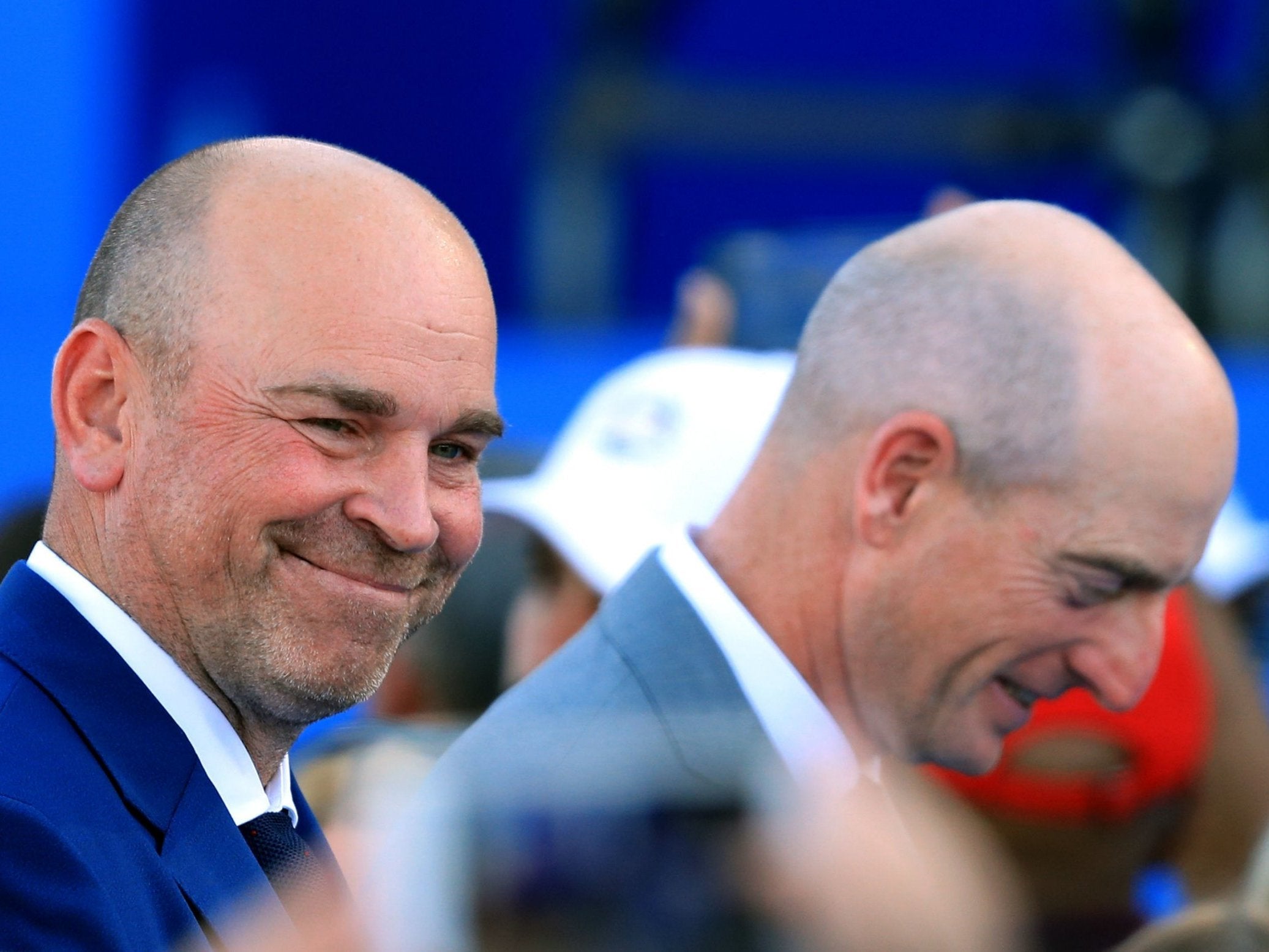Ryder Cup 2018: Why the delicate art and science of the captains’ pairings will prove decisive in Paris
The decisions that Thomas Bjorn and Jim Furyk take over the next three days may not have neat solutions or exact answers. But that doesn’t mean there isn’t a hell of lot riding on every single one
It is, as Jack Nicklaus once put it, as much an art as a science. For 18 months, Jim Furyk and Thomas Bjorn will have filled binders and spreadsheets with notes and numbers, compiling data, gauging chemistry. But when it comes down to it, sometimes you just need to fly by the seat of your pants.
A keen instinct can be as much of an asset as sound analysis. The announcement of the morning fourball pairings on Thursday evening offers the first real window into the thinking of two captains who have gone to greater lengths than usual to guard their strategy until the last possible moment.
Perhaps the most eye-catching pairing of all is Rory McIlroy and Thorbjorn Olesen, the superstar and the rookie, which may well be Bjorn’s attempt to recreate McIlroy’s successful partnership with Thomas Pieters at Hazeltine two years ago. And Bjorn’s selections can be read above all as a show of faith in his rookies, with four out of five seeing action in the first session.
McIlroy will be a strong favourite to play all five sessions, but history suggests that the emotional toil of playing 72 holes of matchplay over two days can take its toll. Since the admission of continental Europe in 1979, players who participated in each of the first four sessions have a losing record in the Sunday singles (47-48-19), which suggests that even the best or most in-form players are liable to underperform if run into the ground.
On the other hand, underusing players can also have a negative effect. Not since Brookline in 1999, when Mark James left Andrew Coltart, Jarmo Sandelin and Jean van de Velde on the sidelines for the first two days, has a captain sent a player into their singles match cold, without having made an appearance at some point. We all remember how that turned out. All three were soundly beaten as America pulled off a sensational comeback in front of a slightly overexcited crowd.
In the last two decades, 24 players have gone into Sunday with fewer than two matches under their belts, and have taken just 5½ points between them. The recesses of Ryder Cup history are littered with such also-rans – Andy Sullivan, Stevie Gallacher, Peter Hanson, Vaughn Taylor, Bret Wetterich – for whom the entire experience will doubtless inspire mixed memories. If Bjorn and Furyk are wary of history, then the likes of Alex Noren, Webb Simpson and Bryson DeChambeau will get their chance sooner rather than later.

What of the pairings themselves? “I wouldn’t say that anybody could be with anybody,” Furyk admitted. “Maybe these two don’t get along. It could be personalities. Rarely do you see two really fiery guys paired together. I think one of the tasks for every captain is trying to figure out not only your best pairing, but your best four or five, your best six.”
Furyk has taken a slight risk in splitting up Jordan Spieth and Patrick Reed, who with five points in two competitions are already the joint-most successful in US Ryder Cup history. It is a testament to the depth at his disposal, though, that they look no weaker for the decision, with Spieth pairing up with Justin Thomas and Reed joining Tiger Woods for a partnership that could be inspired, disastrous or anything in between.
That mix of styles can often work in fourballs. In foursomes, however, captains will frequently pair players with similar games. Pairing a shorter hitter with a big bomber in foursomes can often lead to players hitting second shots from unfamiliar areas. Thus the big-hitting McIlroy and Olesen – 2nd and 113th on the European Tour driving stats respectively – may make a pleasing fourball combo, but in foursomes Bjorn may be tempted to break them up.
“In foursomes, it’s more the grinders,” Bjorn said. “It’s more the people that work hard on the golf course and don’t give too many things away and grind it out.” That suggests Noren and Henrik Stenson might get their chance on Friday afternoon, and likewise Webb Simpson on the American side.
Ultimately, though, it’s only ever a suggestion. Sometimes, as any captain will testify, you have to rip up the plan and do what feels right. Darren Clarke will forever rue the grave error he made on the Saturday morning at Hazeltine two years ago, when he decided to bench the in-form Rafa Cabrera-Bello and Chris Wood in favour of two struggling veterans in Lee Westwood and Martin Kaymer, both of whom got clobbered in a session that saw the USA take a decisive 9½-6½ lead.
Sometimes, by contrast, too much chopping and changing can prove counter-productive. Hal Sutton’s call to break up Woods’s partnership with Chris DiMarco after a big win in the Saturday morning fourballs and pair him with the more experienced Davis Love III may have been based on sound evidence and shrewd insight. But as Woods and Love slipped to a crushing 4&3 defeat, history will remember it as a colossal blunder.
Those, then, are the margins. It is, as they say, both art and science. The decisions that Bjorn and Furyk take over the next three days may not have neat solutions or exact answers. But that doesn’t mean there isn’t a hell of lot riding on every single one.
Join our commenting forum
Join thought-provoking conversations, follow other Independent readers and see their replies
Comments